By Paul Roggemans, Carl Johannink and Jean-Marie Biets
A spectacular fireball has been recorded by different cameras of the CAMS BeNeLux network as well as by EN all-sky cameras. Both systems allowed trajectory and orbit calculations and the results from both analyses are compared in this paper. The fireball could not be associated with any known meteor shower. An attempt was made to check if any concentration of orbits occurred at the position of the fireball orbit but no trace of any unknown meteor shower could be detected. The fireball was caused by a sporadic meteoroid.
1 Introduction
A very bright fireball had been registered on February 24 at 0h11m33s UT by many cameras of the BeNeLux CAMS network, several EN all-sky cameras (Figure 1) as well as FRIPON network cameras. A description of the event with a photo gallery of this spectacular fireball has been published in eMeteorNews (Roggemans, 2018). Meanwhile the trajectory and orbit of this fireball have been calculated based on the CAMS data and independently using the all-sky data. The results from both analyses are compared in this article.
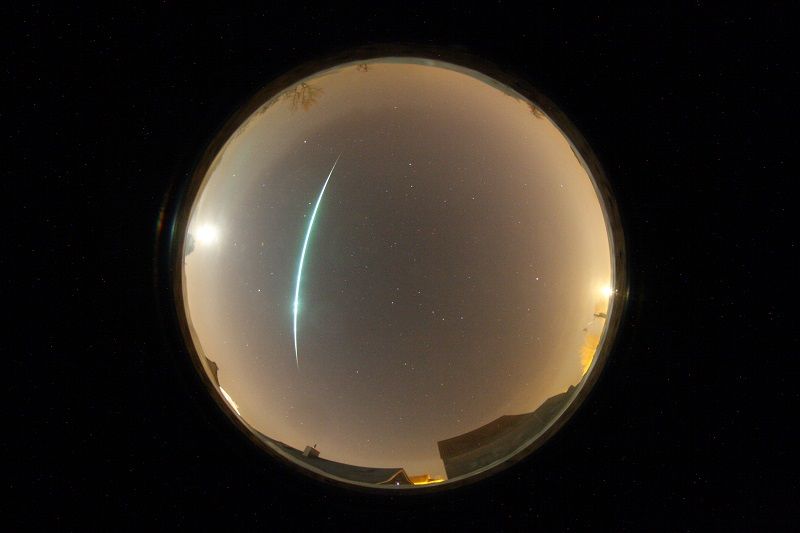
Figure 1 – The fireball of 2018 Feb. 24 00h11m UT by the All Sky camera at Wilderen, by Jean-Marie Biets.
2 Fireball trajectory
Pavel Spurný used the all-sky images obtained by Koen Miskotte, Jos Nijland and Jean-Marie Biets. The all-sky camera EN95 (Jos) uses a mechanic shutter while the all-sky cameras EN92 (Jean-Marie) and EN98 (Koen) are equipped with a Liquid Cristal Shutter (LCS).
The images of Jos and Koen got the fireball trail saturated due to the brightness of the event and the shortness of the trail due to the large distance between the fireball and their geographic position. The image obtained by Jean-Marie Biets also failed to provide sector breaks due to a technical problem with the LCS during that night. Only the image obtained by Jos barely displays breaks which could be used for the velocity computation.
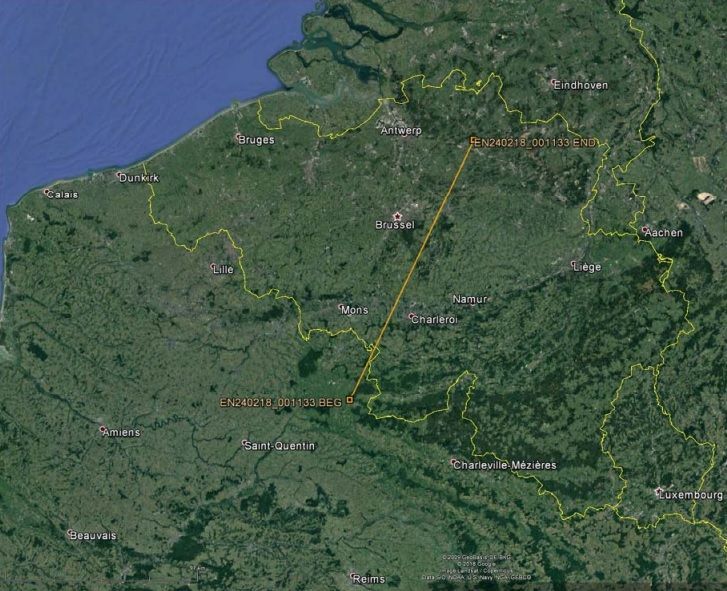
Figure 2 – Ground projection of the fireball trajectory calculated by Pavel Spurný.
Pavel excluded all possibility for any meteorite dropping with an ending height above 30 km. Indeed not every bright fireball results in a meteorite dropping. Pavel Spurný also provided the orbital elements together with a map of the atmospheric trajectory (Figure 2). Based on the all-sky data the fireball had an initial velocity v∞ = 20.9 ± 0.9 km/s, an entrance angle of 34.1 ± 0.8 ° and a total length of 157.3 km.
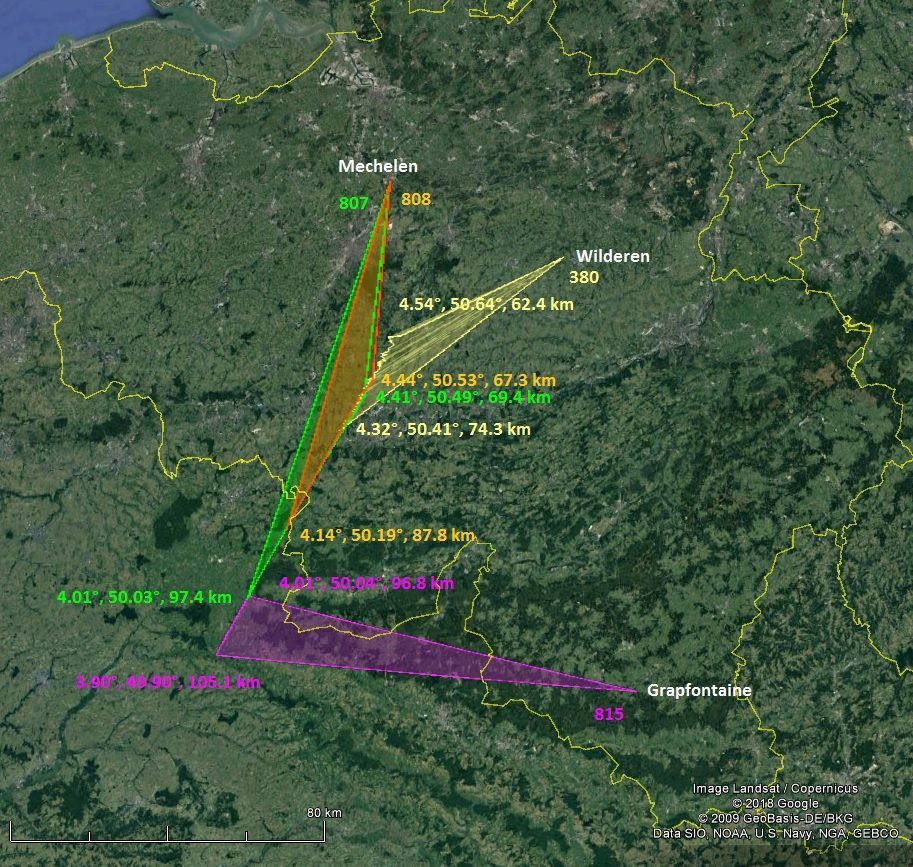
Figure 3 – The ground projection of the fireball based on the images of CAMS 807 and 808 at Mechelen (Luc Gobin), CAMS 380 at Wilderen (Jean-Marie Biets) and CAMS 815 at Grapfontaine (Jean-Paul Dumoulin).
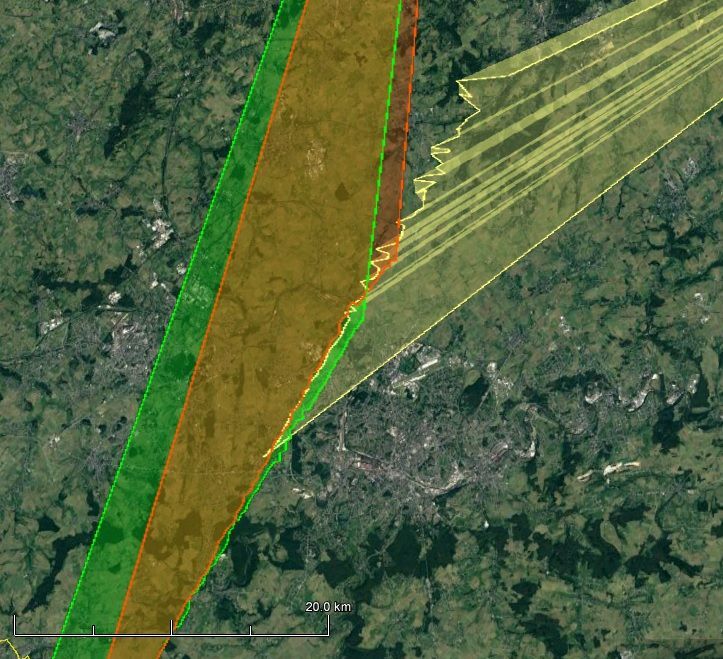
Figure 4 – Close-up of the projection of the individual measured points of the CAMS data where the brightness saturated the CAMS image, causing considerable scatter on the trajectory determination.
These data can be compared with the results that were independently obtained from the CAMS data. CAMS 815 detected the fireball a bit higher before the all-sky got it. The trajectory is about identical in position but the overexposure on the CAMS cameras results in a visible scatter of the individual measuring points for CAMS 807 and 808. This scatter becomes very large on the positions of CAMS 380 where the fireball was between 75 and 60 km elevation (Figures 3 and 4).
3 Fireball orbit
It is indeed interesting to compare the orbital elements between the all-sky and CAMS. The CAMS project collects data for meteors in the magnitude range of –3 to +5 while everything in the magnitude range brighter than –4 fits typically the all-sky camera project. The results for both are listed in Table 1.
Table 1 – The radiant and orbital data as obtained from CAMS data (Carl Johannink) and obtained from All-sky data (Pavel Spurný).
| CAMS | All-sky | |
| λʘ (°) | 335.085 | |
| α (°) | 133.03 ± 0.02 | 137.0 ± 0.3 |
| δ (°) | –16.68 ± 0.07 | –12.2 ± 0.3 |
| vg (km/s) | 17.6 | |
| a (A.U.) | 2.39 | 2.3 |
| e | 0.658 | 0.65 |
| q (A.U.) | 0.816 | 0.81 |
| i (°) | 15.83 | 16.5 |
| ω (°) | 56.10 | 57.9 |
| Ω (°) | 155.08 | 155.09 |
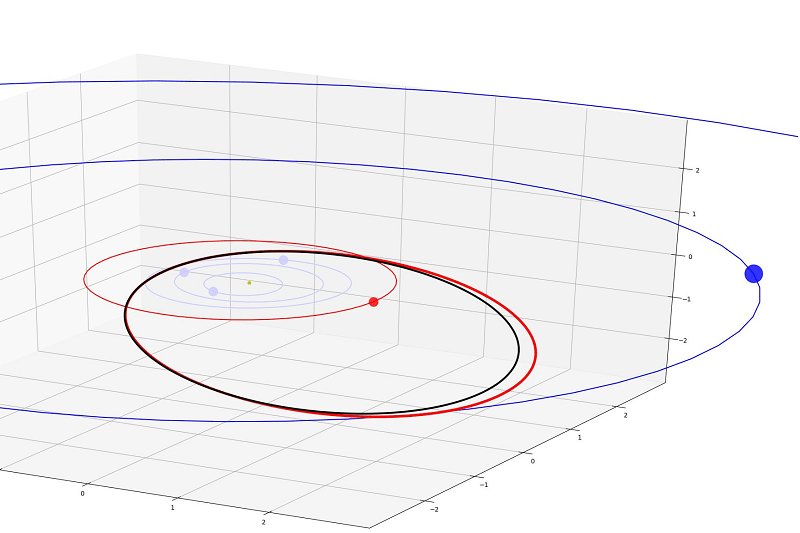
Figure 5a – The orbits obtained for this fireball, red for CAMS, black for the All-Sky. A 3D view with the inner planets, planet Mars shown in red and Jupiter in blue. These plots were provided by Peter Campbell-Burns.
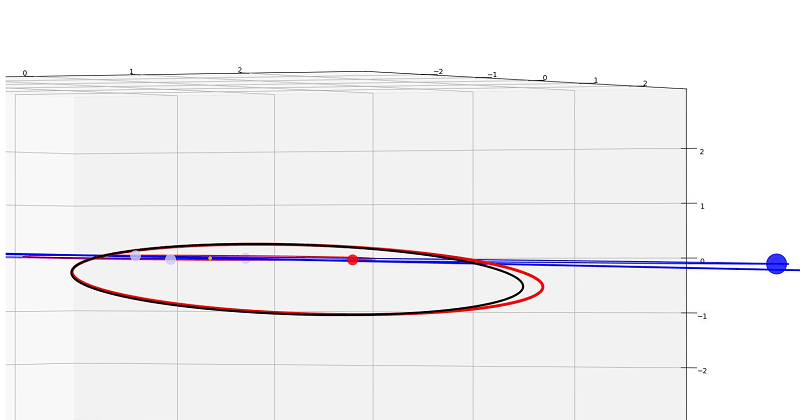
Figure 5b – The orbits obtained for this fireball, red for CAMS, black for the All-Sky. The orbits as seen from a position in the ecliptic plane. Note the aphelion is situated in the asteroid belt. These plots were provided by Peter Campbell-Burns.
The orbit is situated near the ecliptic with an aphelion in the asteroid belt, well within the orbit of Jupiter in a region very rich in dust (Figures 5a and 5b).
4 Shower or sporadic fireball?
The orbit of the fireball has been compared to the 1776 reference orbits of the showers of the IAU working list of meteor showers. This list contains1031 meteor shower numbers, 64 of which were removed leaving 967 showers, most of which remain to be confirmed. The orbit of the fireball did not match with any of the 1776 reference orbits, not even with the weak discrimination threshold of DSH < 0.25, DD < 0.105 and DH < 0.25.
An attempt was made to find out if this fireball could be part of some so far unknown meteor shower. We therefore used 483449 orbits from EDMOND (Kornos et al., 2014), and SonotaCo (SonotaCo, 2009). We selected all orbits that radiated from the same area at the sky with a comparable velocity in the same month of time (α ± 10°, δ ± 10°, λʘ ± 15°, vg ± 5 km/s).
With 83 orbits found within these criteria with at a glimpse several similar orbits there might be some concentration of orbits. We took the fireball orbit as parent orbit and compared all 83 orbits applying the discrimination criteria of Southworth and Hawkins (1963), Drummond (1981) and Jopek (1993). The results confirmed the presence of several comparable orbits, considering the different thresholds, weak, medium weak, medium high and high:
- DSH < 0.25 & DD < 0.105 & DH < 0.25, 65 orbits;
- DSH < 0.2 & DD < 0.08 & DH < 0.2, 51 orbits;
- DSH < 0.15 & DD < 0.06 & DH < 0.15, 30 orbits;
- DSH < 0.1 & DD < 0.04 & DH < 0.1, 4 orbits.
Although the D-criteria indicate the presence of a significant number of comparable orbits, the final test with the inclination i versus length of perihelion Π (Figure 6), shows no concentration at all!
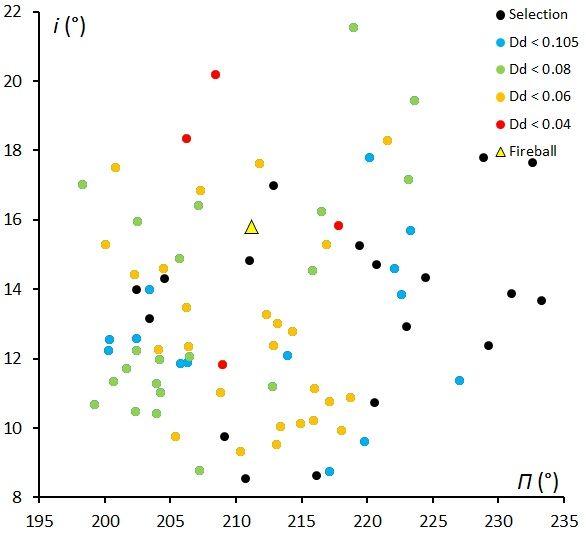
Figure 6 – The inclination i versus length of perihelion Π. The colors indicate the different degrees of similarity according to the D-criteria.
When we ignore the fireball and calculate the median values for the 83 selected orbits and take these as parent orbit to apply the D-criteria we get an even better score on our similarity criteria:
- DSH < 0.25 & DD < 0.105 & DH < 0.25, 67 orbits;
- DSH < 0.2 & DD < 0.08 & DH < 0.2, 53 orbits;
- DSH < 0.15 & DD < 0.06 & DH < 0.15, 36 orbits;
- DSH < 0.1 & DD < 0.04 & DH < 0.1, 13 orbits.
Also here the plot of the inclination i versus length of perihelion Π, shows a random mixture of orbits with low and high threshold D-criteria without any indication for some concentration of orbits. With other words, all these orbits are no more than similar sporadic orbits, all with a short periodicity close to the ecliptic plane. If some of these orbits are effectively physically related, it is most difficult, if not impossible to determine such relationship unless the orbital evolution can be reconstructed to find a similar origin, if any.
We can conclude that the fireball was caused by a sporadic meteoroid.
Acknowledgment
The authors thank Dr. Pavel Spurný of the Astronomical Institute, Czech Academy of Sciences for the computations on this fireball data and to share these data with us.
References
Drummond J. D. (1981). “A test of comet and meteor shower associations”. Icarus, 45, 545–553.
Jopek T. J. (1993). “Remarks on the meteor orbital similarity D-criterion”. Icarus, 106, 603–607.
Kornoš L., Matlovič P., Rudawska R., Tóth J., Hajduková M. Jr., Koukal J., and Piffl R. (2014). “Confirmation and characterization of IAU temporary meteor showers in EDMOND database”. In Jopek T. J., Rietmeijer F. J. M., Watanabe J., Williams I. P., editors, Proceedings of the Meteoroids 2013 Conference, Poznań, Poland, Aug. 26-30, 2013. A.M. University, pages 225–233.
Roggemans P. (2018). “Fireball over Belgium 2018 February 24, 0h11m UT”. eMetN, 3, 81–83.
SonotaCo (2009). “A meteor shower catalog based on video observations in 2007-2008”. WGN, Journal of the International Meteor Organization, 37, 55–62.
Southworth R. R. and Hawkins G. S. (1963). “Statistics of meteor streams”. Smithson. Contrib. Astrophys., 7, 261–286.

